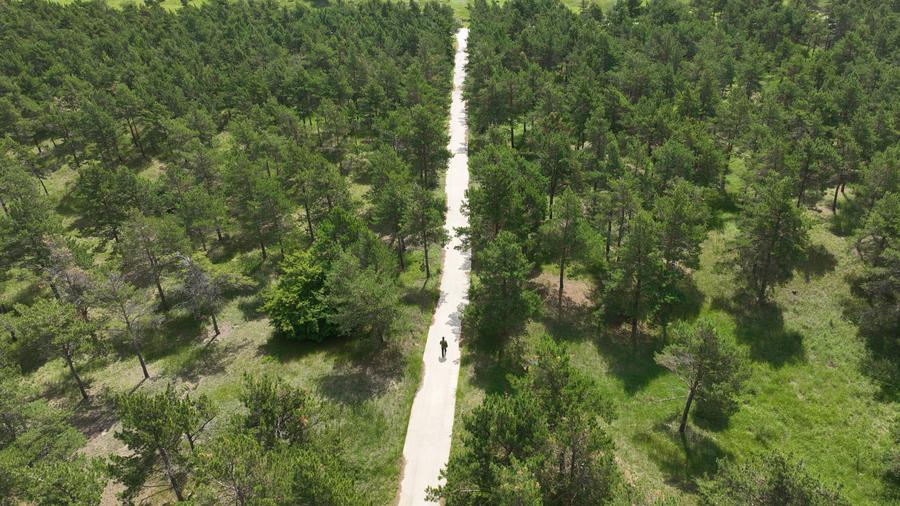


An aerial drone photo shows Li Dongkui partroling the forest in Zhangwu County, northeast China's Liaoning Province, May 31, 2024. (Xinhua/Yang Qing)
BEIJING, June 6 (Xinhua) -- After decades of relentless efforts, China has made concrete progress in advancing afforestation programs to address desertification and contribute to global ecological restoration.
As a pressing ecological challenge impacting vast stretches of China, desertification has long been a focal point among the country's development concerns and received full commitment in its environmental policymaking.
The Three-North Shelterbelt Forest Program (TSFP), the world's largest afforestation project, serves as a good example. Launched in 1978 and scheduled to be completed in 2050, it has already helped safeguard the land inhabited by people in the northwest, north and northeast of China.
Observed on Wednesday, this year's World Environment Day was themed "land restoration, desertification and drought resilience." This theme echoes China's long-standing dedication to combating desertification and ecological protection.
The following are some highlights of China's decades-long implementation of the program and its achievements in restoring ecosystems.
NATIONAL PUSH
-- China announced on June 3 a special fund worth 12 billion yuan (about 1.69 billion U.S. dollars) from this year's central budget to provide financial support for the TSFP.
-- In June 2023, China proposed that the TSFP should be transformed into a fully functional, unbreakable "green Great Wall" and ecological security barrier in northern China.
-- Under the program, a total of 22 projects have been under construction by the end of 2023, expanding afforestation and grass planting on a total expanse of approximately 1.22 million hectares.
-- Last year, China approved the sand control plans of 19 provincial regions and maintained five zones of desertified land sealed off for protection, bringing the total area of such zones to 1.8 million hectares.
GREENING ACHIEVEMENTS
-- Since 1978 when the TSFP was initiated, China has expanded its afforestation area under the program by 32 million hectares. By 2050, this is projected to encompass over 4 million square kilometers across 13 provincial-level regions, accounting for 42.4 percent of the country's total land area.
-- The forest coverage rate in the areas under the program increased from 5.05 percent in 1978 to 13.84 percent in 2023.
-- In 2023, about 4 million hectares of forest were planted in the country, higher than the 3.83 million hectares of afforestation seen in 2022, and 4.38 million hectares of degraded grassland were restored.
-- Some 1.9 million hectares of sandy and stony land were treated last year.
-- Since 2012, a total of 20.33 million hectares of desertified land have been rehabilitated, amounting to 53 percent of all the reversable desertified land in the country.
-- During the 2012-2022 period, China's accumulative afforestation area reached 960 million mu (64 million hectares), while 165 million mu of grassland was improved, and more than 12 million mu of wetlands was added or restored.
-- From 2009 to 2019, desertified land had a net decrease of 50,000 square km, while the sandy land had a net decrease of 43,300 square km.
-- It is estimated that about 15 million people in the areas under the program have been lifted out of poverty by developing forestry and fruit growing industries.
点击右上角![]() 微信好友
微信好友
 朋友圈
朋友圈

请使用浏览器分享功能进行分享
